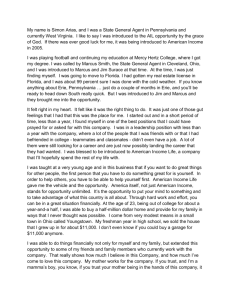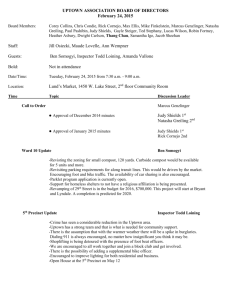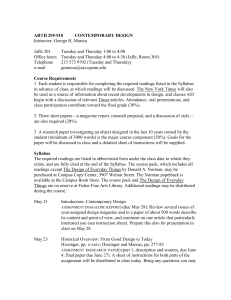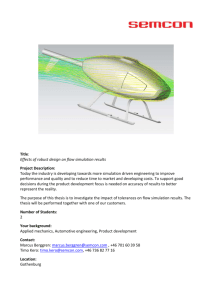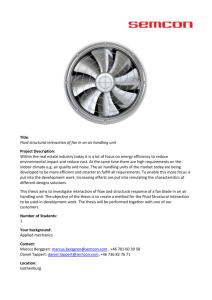Click here to access - Maryland Learning Links
advertisement
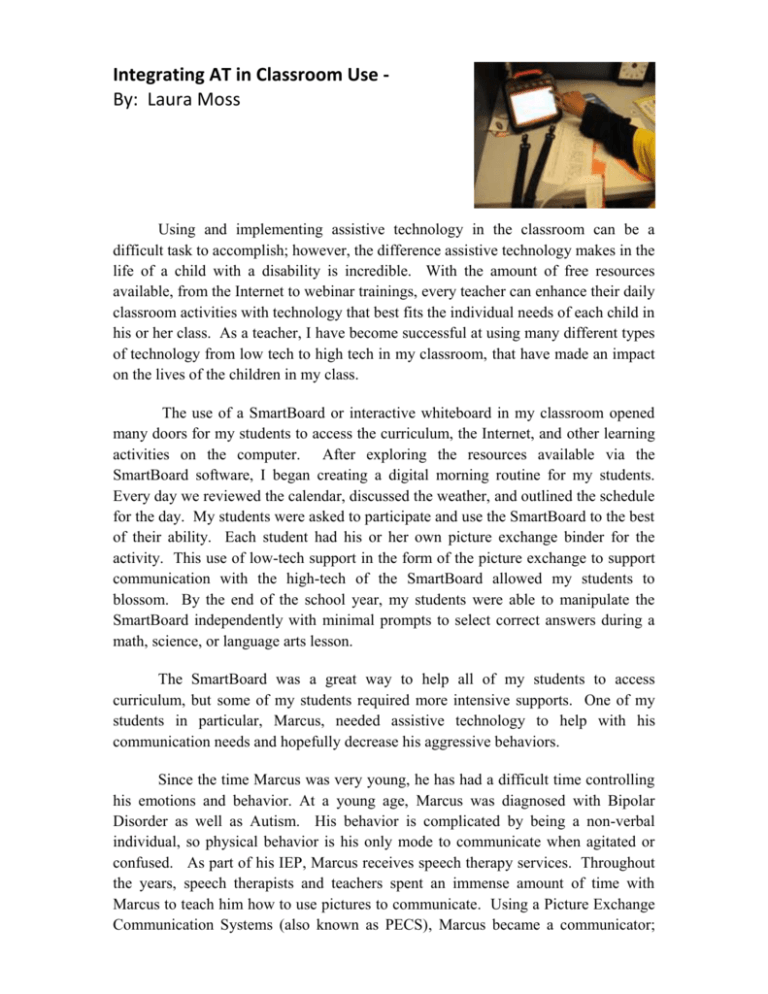
Integrating AT in Classroom Use By: Laura Moss Using and implementing assistive technology in the classroom can be a difficult task to accomplish; however, the difference assistive technology makes in the life of a child with a disability is incredible. With the amount of free resources available, from the Internet to webinar trainings, every teacher can enhance their daily classroom activities with technology that best fits the individual needs of each child in his or her class. As a teacher, I have become successful at using many different types of technology from low tech to high tech in my classroom, that have made an impact on the lives of the children in my class. The use of a SmartBoard or interactive whiteboard in my classroom opened many doors for my students to access the curriculum, the Internet, and other learning activities on the computer. After exploring the resources available via the SmartBoard software, I began creating a digital morning routine for my students. Every day we reviewed the calendar, discussed the weather, and outlined the schedule for the day. My students were asked to participate and use the SmartBoard to the best of their ability. Each student had his or her own picture exchange binder for the activity. This use of low-tech support in the form of the picture exchange to support communication with the high-tech of the SmartBoard allowed my students to blossom. By the end of the school year, my students were able to manipulate the SmartBoard independently with minimal prompts to select correct answers during a math, science, or language arts lesson. The SmartBoard was a great way to help all of my students to access curriculum, but some of my students required more intensive supports. One of my students in particular, Marcus, needed assistive technology to help with his communication needs and hopefully decrease his aggressive behaviors. Since the time Marcus was very young, he has had a difficult time controlling his emotions and behavior. At a young age, Marcus was diagnosed with Bipolar Disorder as well as Autism. His behavior is complicated by being a non-verbal individual, so physical behavior is his only mode to communicate when agitated or confused. As part of his IEP, Marcus receives speech therapy services. Throughout the years, speech therapists and teachers spent an immense amount of time with Marcus to teach him how to use pictures to communicate. Using a Picture Exchange Communication Systems (also known as PECS), Marcus became a communicator; using this system to create full sentences and make basic requests. With the mastery of this low-tech system and the continued need for a more dynamic communication system to hopefully decrease his aggression when agitated, the assistive technology team determined Marcus was definitely ready for a high tech device and began a trial with him using an old Dynavox voice output decive that had been in storage. Initially, the use of the Dynavox was an experiment to see how well Marcus could do with a high tech device. After the device was programmed with vocabulary to meet his needs, Marcus began to practice using it to request which snack he wanted and if he needed more snack. Data was collected on Marcus’ use of the Dynavox. Based on the data collected and the outdated nature of the trial Dynavox, it was determined that Marcus was ready for a new device with more features. The school based team decided to ask the district assistive technology team to conduct an assessment on Marcus at the end of the school year. The assistive technology team brought a new device for Marcus to try called the SpringBoard Lite. The SpringBoard Lite has an assessment tool built into the device, which was used with Marcus. He did an excellent job on the assessment tool and was given a SpringBoard Lite the following school year. The SpringBoard Lite became Marcus’ voice. He was taught how to ask for every day materials such as scissors, glue, and paper. By the end of the school year, Marcus was using the SpringBoard Lite to create simple sentences and respond correctly when working on a SmartBoard activity. Marcus’s independence level, accuracy of phrases, and understanding of symbols on the device increased drastically. His communication became far more appropriate when responding to novel questions and his frequency of aggressions and self-injurious behaviors decreased tremendously. The SpringBoard Lite has helped Marcus achieve many of his IEP goals and objectives. Without the SpringBoard Lite, Marcus would not be able to express his wants and needs and communicate appropriately with the people around him. He now has a greater sense of routine and a better understanding of what is expected of him academically in the classroom. Integration of devices, such as the SpringBoard Lite, within the classroom can be successful as long as the entire team works together to make sure an appropriate device is first selected, and that the student is supported in his or her use of the device. Without teamwork, Marcus would not have been as successful with his use of the SpringBoard Lite. Additionally, technology, such as the Smartboard used as a general classroom support, allowed many students, including Marcus, greater access to the curriculum and classroom activities Technology helps my students learn, and also helps me to better meet their needs. Proactive educators have the power to introduce technology that improves the student’s access to the curriculum and to enhance the students’ strengths and improve their weaknesses, and to give them opportunities to succeed in school and life.
